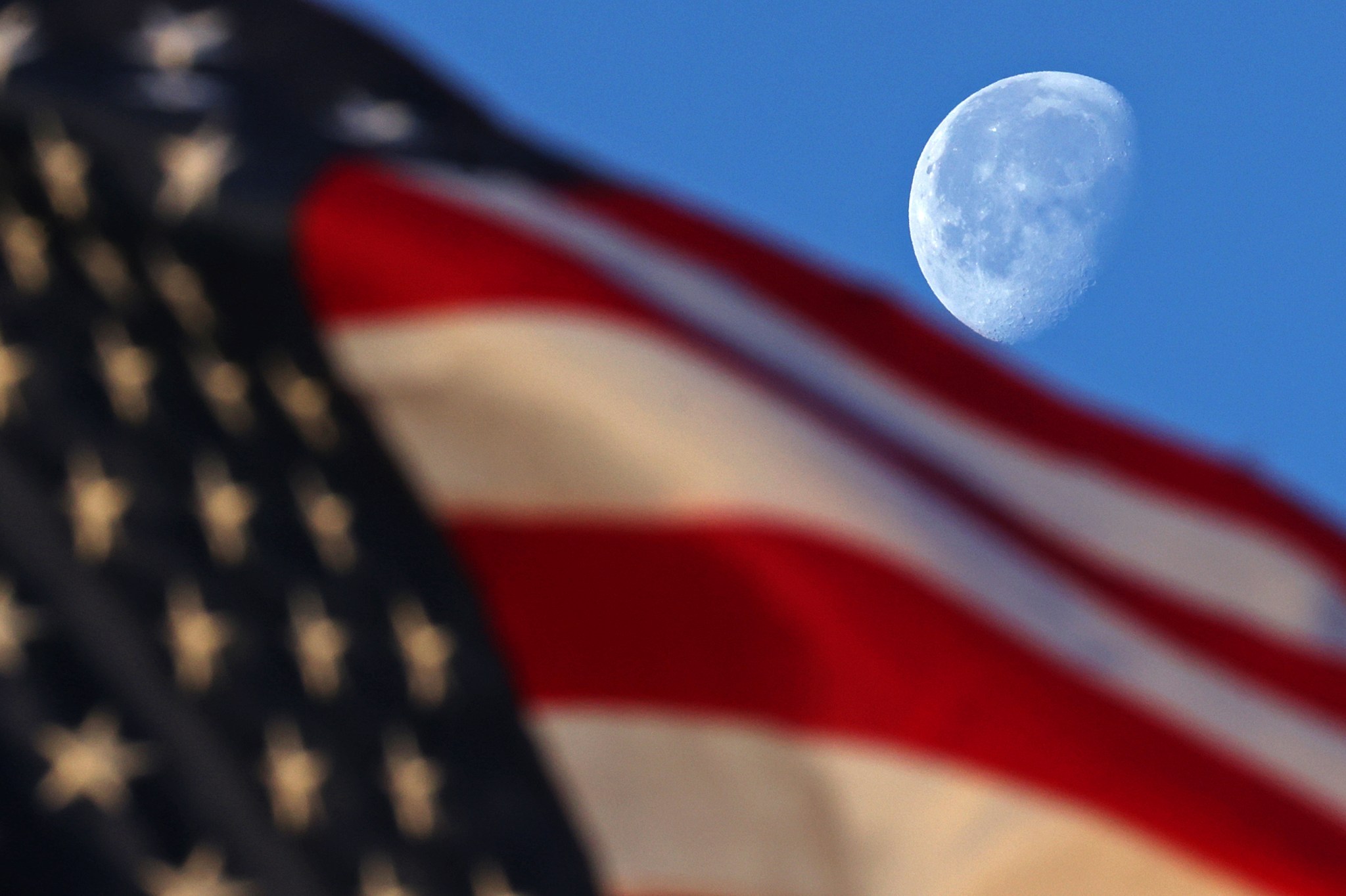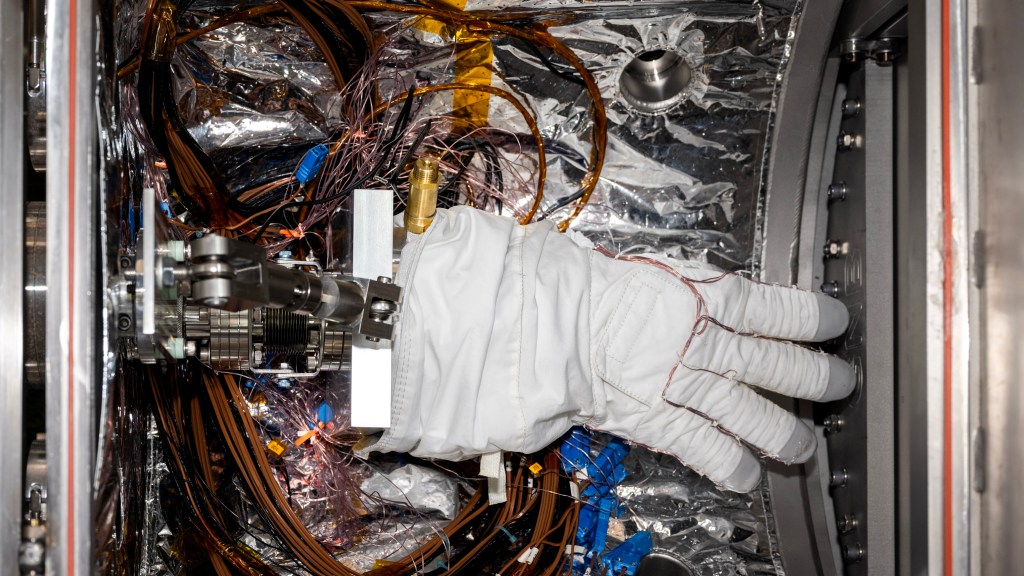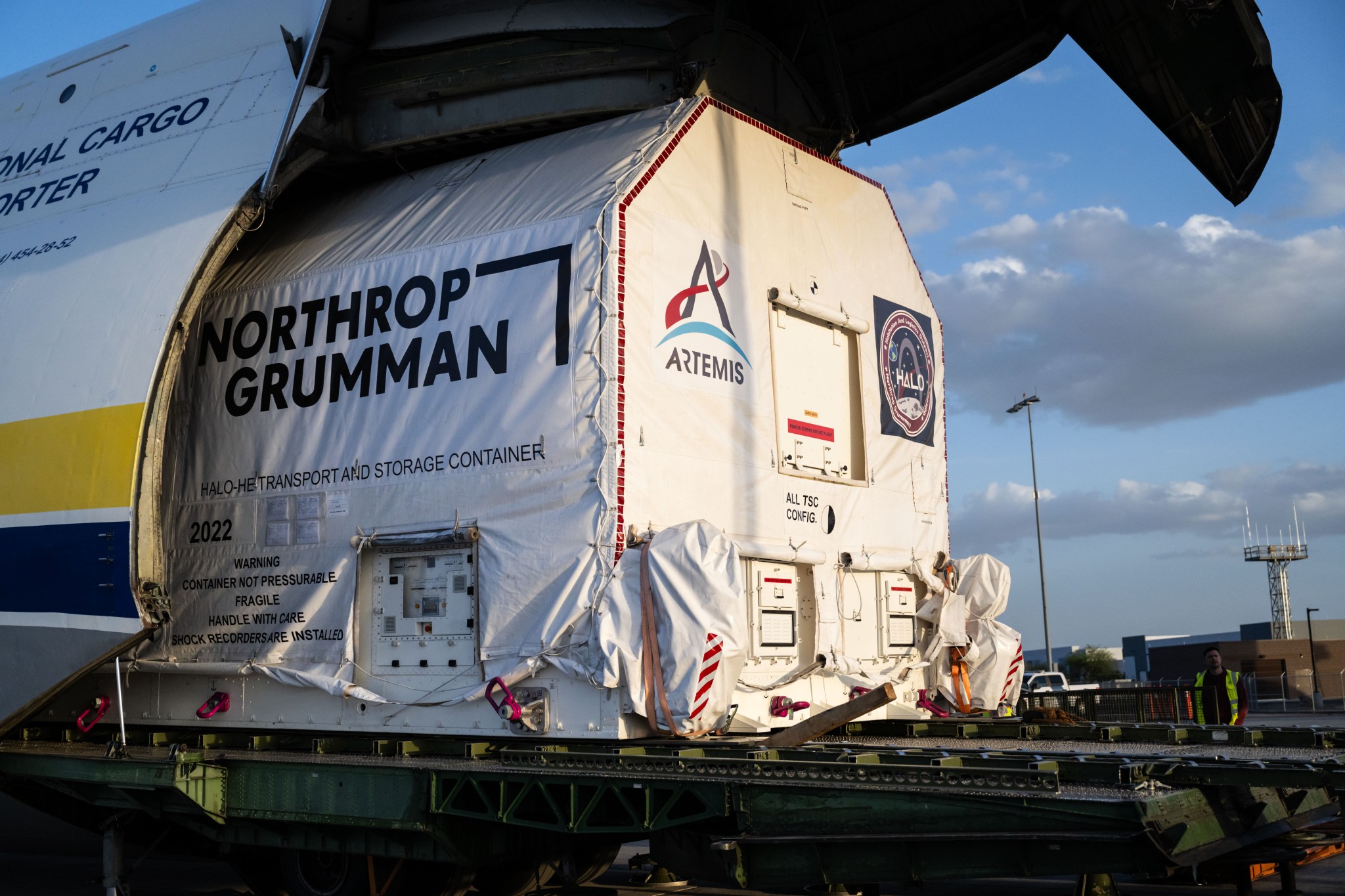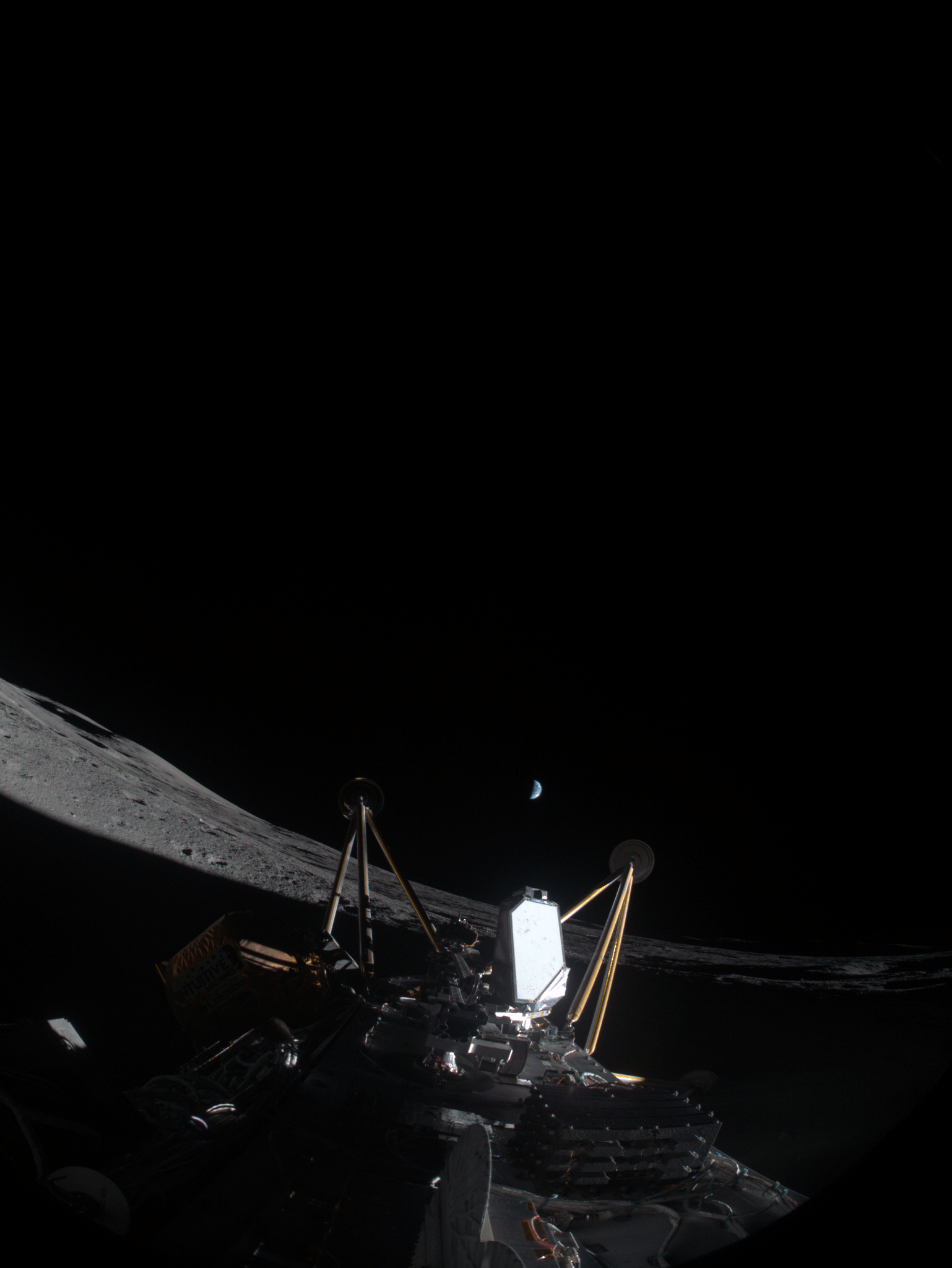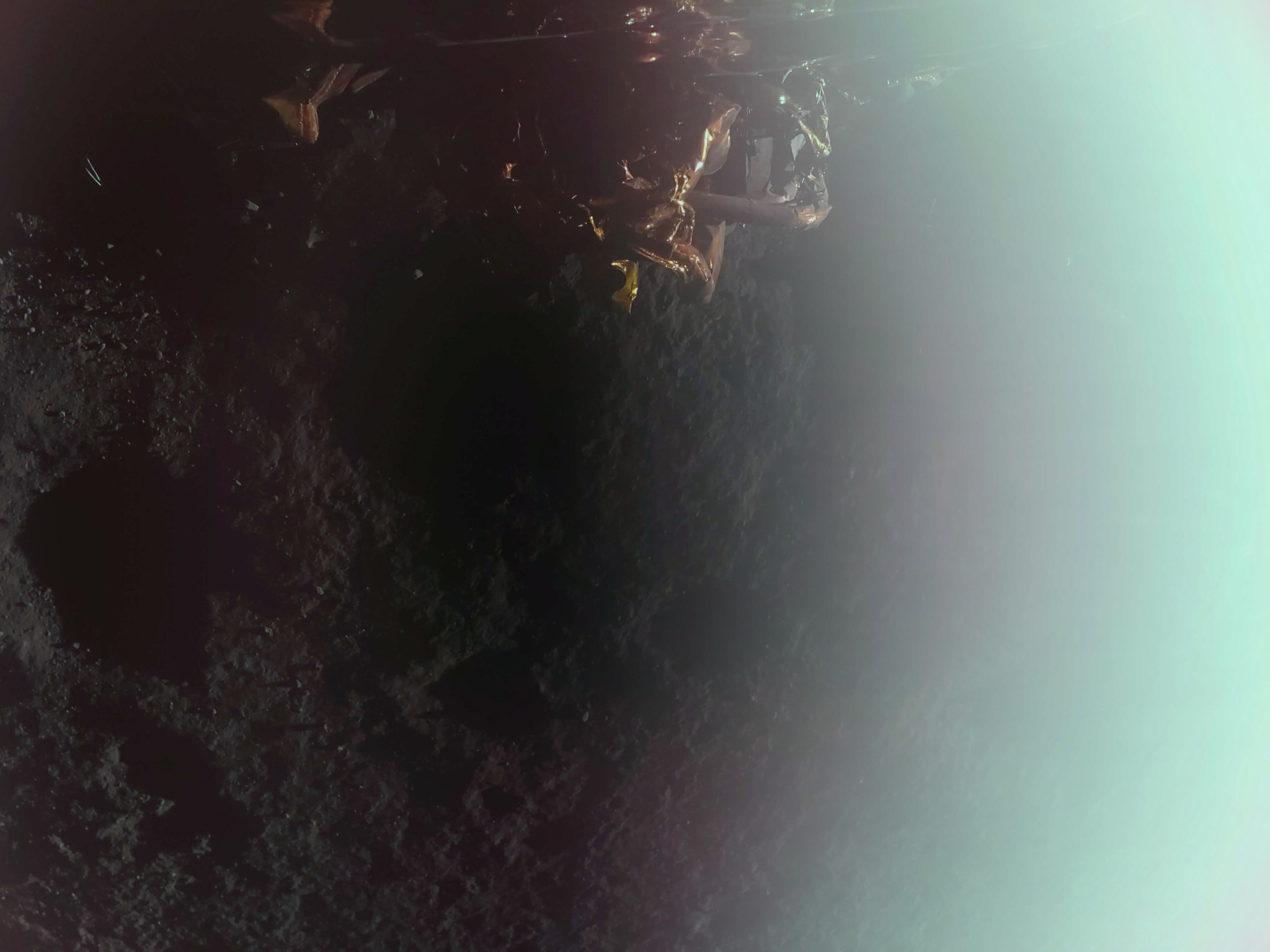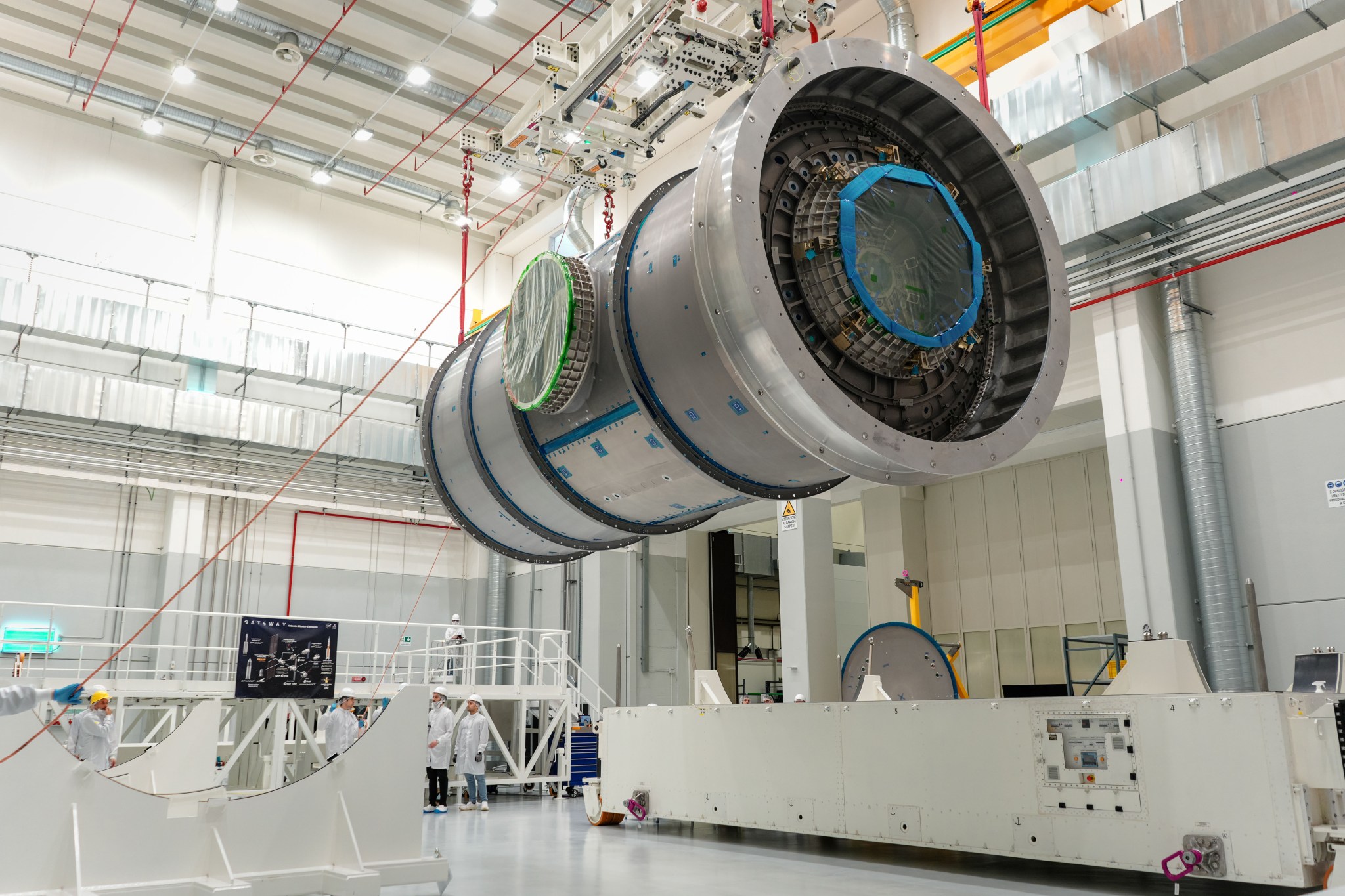NASA/Michael DeMocker Just after sunrise, the waning gibbous moon sets just behind a waving United States flag on March 19, 2025, in this image from NASA’s Michoud Assembly Facility in New Orleans. The waning gibbous moon phase comes after the full moon. As the Moon begins its journey back toward the Sun, the opposite side of the Moon now reflects the Moon’s light. The lighted side appears to shrink, but the Moon’s orbit is simply carrying it out of view from our perspective. The Moon also rises later and later…
Read MoreTag: Earth’s Moon
NASA’s LRO Views Japan’s RESILENCE Lunar Lander Landing Area
1 min read Preparations for Next Moonwalk Simulations Underway (and Underwater) NASA’s Lunar Reconnaissance Orbiter Camera (LROC) imaged the landing area of the ispace SMBC x HAKUTO-R Venture Moon Mission 2 RESILIENCE lunar lander which is slated to land on the surface of the Moon no earlier than June 5, 2025 (UTC). This view of the primary landing area is 3.13 miles (5,040 meters) wide and north is up. The site is in Mare Frigoris, a volcanic region interspersed with large-scale faults known as wrinkle ridges. Mare Frigoris formed over 3.5 billion years…
Read MoreNASA Moon Observing Instrument to Get Another Shot at Lunar Ops
The Mass Spectrometer Observing Lunar Operations (MSolo) for NASA’s Volatile Investigating Polar Exploration Rover (VIPER) mission is prepared for packing inside a laboratory in the Space Station Processing Facility at NASA’s Kennedy Space Center in Florida on Feb. 21, 2023. MSolo is a commercial off-the-shelf mass spectrometer modified to work in space and it will help analyze the chemical makeup of landing sites on the Moon, as well as study water on the lunar surface. NASA/Kim Shiflett A NASA-developed technology that recently proved its capabilities in the harsh environment of…
Read MoreLunar Space Station for NASA’s Artemis Campaign to Begin Final Outfitting
3 min read Preparations for Next Moonwalk Simulations Underway (and Underwater) Gateway’s HALO module at Northrop Grumman’s facility in Gilbert, Arizona, on April 4, 2025, shortly after its arrival from Thales Alenia Space in Turin, Italy. NASA/Josh Valcarcel NASA continues to mark progress on plans to work with commercial and international partners as part of the Gateway program. The primary structure of HALO (Habitation and Logistics Outpost) arrived at Northrop Grumman’s facility in Gilbert, Arizona, where it will undergo final outfitting and verification testing. HALO will provide Artemis astronauts with…
Read MoreNASA Tests Key Spacesuit Parts Inside This Icy Chamber
6 min read Preparations for Next Moonwalk Simulations Underway (and Underwater) An astronaut glove designed for International Space Station spacewalks is prepped for testing in a chamber called CITADEL at NASA JPL. Conducted at temperatures as frigid as those Artemis III astronauts will see on the lunar South Pole, the testing supports next-generation spacesuit development. NASA/JPL-Caltech Engineers with NASA Johnson and the NASA Engineering and Safety Center ready an astronaut glove for insertion into the main CITADEL chamber at JPL. The team tested the glove in vacuum at minus 352…
Read MoreNASA Welcomes Gateway Lunar Space Station’s HALO Module to US
2 min read Preparations for Next Moonwalk Simulations Underway (and Underwater) Gateway’s HALO (Habitation and Logistics Outpost) arrives in Mesa, Arizona, after traveling from Italy, where Thales Alenia Space fabricated its primary structure. Delivered by cargo aircraft to Phoenix-Mesa Gateway Airport, HALO will be transported to Northrop Grumman’s facility in Gilbert for final outfitting. NASA/Josh Valcarcel A core component of Gateway, humanity’s first space station around the Moon, is now on American soil and one step closer to launch. In lunar orbit, Gateway will support NASA’s Artemis campaign to return…
Read MoreNASA Receives Some Data Before Intuitive Machines Ends Lunar Mission
Intuitive Machines’ IM-2 captured an image March 6, 2025, after landing in a crater from the Moon’s South Pole. The lunar lander is on its side about 820 feet from the intended landing site, Mons Mouton. In the center of the image between the two lander legs is the Polar Resources Ice Mining Experiment 1 suite, which shows the drill deployed. Credit: Intuitive Machines Shortly after touching down inside a crater on the Moon, carrying NASA technology and science on its IM-2 mission, Intuitive Machines collected some data for the…
Read MoreTouchdown! Carrying NASA Science, Firefly’s Blue Ghost Lands on Moon
First image captured by Firefly’s Blue Ghost lunar lander, taken shortly after confirmation of a successful landing at Mare Crisium on the Moon’s near side. This is the second lunar delivery of NASA science and tech instruments as part of the agency’s Commercial Lunar Payload Services initiative. Credit: Firefly Aerospace Carrying a suite of NASA science and technology, Firefly Aerospace’s Blue Ghost Mission 1 successfully landed at 3:34 a.m. EST on Sunday near a volcanic feature called Mons Latreille within Mare Crisium, a more than 300-mile-wide basin located in the…
Read MoreNASA Marks Artemis Progress With Gateway Lunar Space Station
Gateway’s HALO (Habitation and Logistics Outpost) in a cleanroom at Thales Alenia Space in Turin, Italy. After final installations are complete, it will be packaged and transported to the United States for final outfitting before being integrated with Gateway’s Power and Propulsion Element and launched to lunar orbit. Thales Alenia Space Through the Artemis campaign, NASA will send astronauts on missions to and around the Moon. The agency and its international partners report progress continues on Gateway, the first space station that will permanently orbit the Moon, after visiting the…
Read MoreNASA Sets Coverage of Firefly’s First Robotic Commercial Moon Landing
Firefly’s Blue Ghost lunar lander captured a bright image of the Moon’s South Pole (on the far left) through the cameras on its top deck, while it travels to the Moon as part of NASA’s CLPS (Commercial Lunar Payload Services) initiative and Artemis campaign. Credits: Firefly Aerospace With a suite of NASA science and technology on board, Firefly Aerospace is targeting no earlier than 3:45 a.m. EST on Sunday, March 2, to land the Blue Ghost lunar lander on the Moon. Blue Ghost is slated to touch down near Mare…
Read More